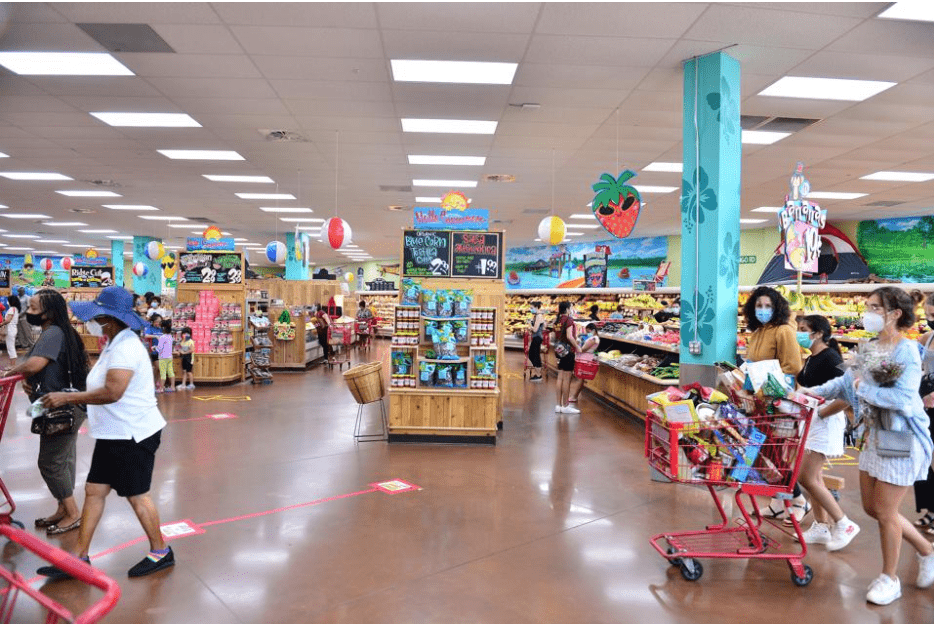Successful brands know what their customers want. To stay strategic while providing company value, businesses in the e-commerce sector should put together a retail branding plan. Learn what strategies go into retail branding to brainstorm ways to include it within your overall marketing strategy.
What is Retail Branding?
As the digital revolution has changed the overall branding and marketing landscape, it has also impacted the retail industry. With more and more people investing in e-commerce opportunities and shopping online, businesses have to adapt to the complex industry.
Unlike product branding, retail branding is a strategy based on a brand concept but transferred into the retail sector.
When branding applies to the retail space, the point isn’t to sell specific brands but to market the overall retailer itself. For example, a department store offers a variety of well-known brands and services that customers could purchase elsewhere.
How can retail branding make a difference in where consumers choose to shop for those products?
This article will break down the advantages and disadvantages of retail branding along with a few examples of it in action.
Advantages of Retail Branding
No matter the size of the retailer, an effective retail branding strategy can be put in place. To fully focus your company’s strategy, it is important to know the advantages and best practices of retail branding.
- Your brand is on top of global trends: Our world, especially in the age of social media, is more influenced by outside parties than what’s outside in our backyard. As the entire digital landscape makes way for new voices, that leads to new trends. For retailers to stay ahead of the curve, they must pay attention to retail business models with and within their industry. If your team is proactive with retail branding, industry awareness is one of the touchpoints to establish brand positioning for your company.
- Your brand will understand decision journeys: A fundamental stage of retail branding is understanding your target audience and their journey. Your brand needs to establish key points of that journey – which is easier said than done. Many factors go into this process because not every consumer (depending on your business mission and product) is the same.
- Your brand is strategic with personalization: With many choices out there, especially when it comes to retail brands, it is important for your company to showcase how you’re better than other competitors. Whether this is through a unique social media aesthetic or experimenting with a high level of technology, successful brands and retailers need to provide an experience that is unique to their offerings. With strong personalization, consumer engagement will remain consistent for businesses as long as the service meets their needs.
A sustainable retail branding strategy for businesses involves direct communication, proactivity, personalization, and transparency.
Key Challenges of Retail Branding
In today’s world, retail branding is the key to success for a lot of businesses but does present its own set of challenges.
- Your brand has to deal with online and offline expectations: When consumers are shopping online, they expect different expectations from what they experience in-store. For example, when shopping online for clothes, consumers are looking for as much detail as possible about the products since they can’t physically see, touch, or try the product on. To counteract this, retailers must think ahead with their overall in-store and website branding strategies. An in-depth evaluation of your overall services is required to combat this challenge.
- Your brand needs strategic personalization: While an advantage to an overall retail branding strategy is having a personalized approach, this can be challenging for some businesses and retailers breaking into the market. The successful implementation of a retail branding strategy correlates with the provided retail experience – your business must think critically about what you offer as a service and how it stands out. Be innovative and creative when possible.
- Your brand must be technologically equipped: It is incredibly important for your business to be experienced in various online channels – consumers are looking for accessible brand experiences. This is a key expectation of consumers relying on the online world for a variety of tasks. Your business must be able to adapt your services to the online space, if not, it might continue being lost in the shuffle.
A sustainable retail branding strategy should be prepared for any challenges by thinking about their consumers’ best interests and being proactive against their competition.
Examples of Retail Branding
Here are some examples of retail branding in action:
Bombas, an online retailer, has done an excellent job of tying its mission right to sales.
For each product purchased, the retailer donates an item that helps homeless communities. Along with providing a quality product, they have a mission that directly impacts communities worldwide, leading to a successful retail branding strategy.

Because of their impactful mission and product, over 50 million items have been donated. Buyers are making a difference for themselves and outside communities.
With an in-person experience unique to other grocery stores, Trader Joe’s creates an intimate feel within their markets, while providing access to food and cultures outside of the US.

Along with the location-specific decor in different sections, the fun and friendly atmosphere are complemented by details with their signs and creative names for private label products.
For businesses looking to explore retail branding, a great starting point is to review other popular, well-known retailer strategies while exploring the power of advertising.
Explore Retail Branding Strategies for Your Company
Your company might not own a retailer or operate with an e-commerce arm. That’s okay.
As we break down the importance of retail branding, it is also important to note that many strategies within the retail industry can apply to organizations in the B2B space and other sectors.
As rapid evolution continues within the world of consumer engagement, businesses of all sizes need to deal with change. If a company is prepared for the road of continuous improvement and adaptability, they should adopt key characteristics of successful branding strategies in order to meet consumer expectations and avoid brand dilution.